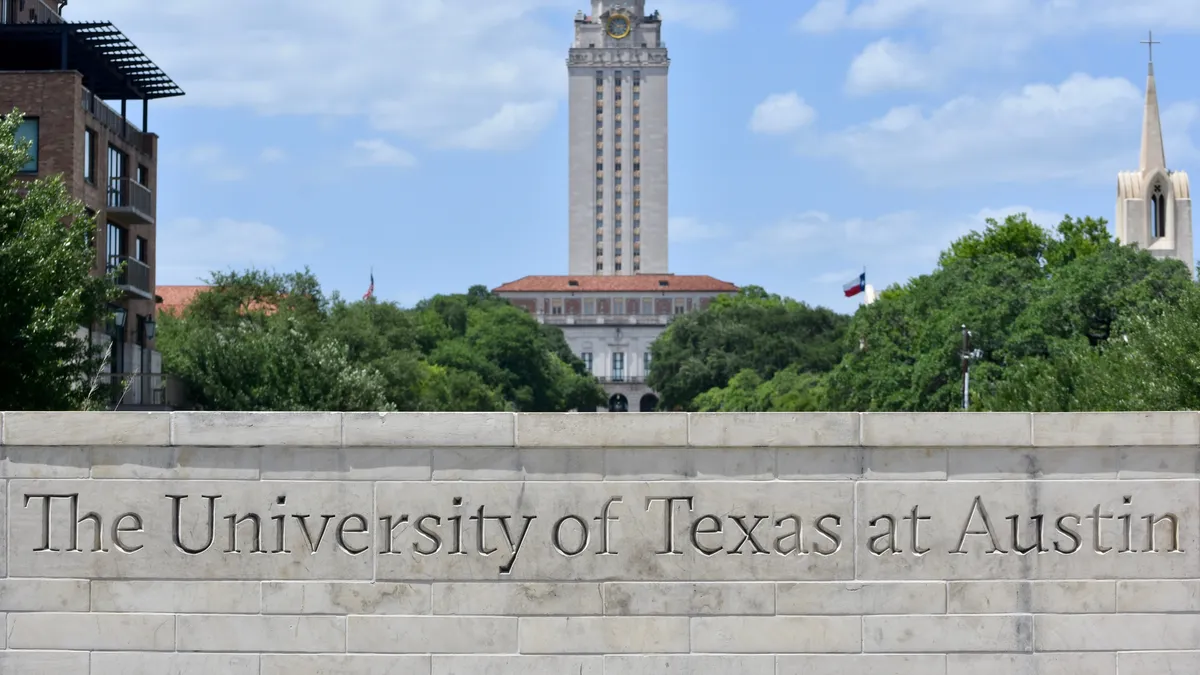Dive Brief:
- A Texas policy that promises in-state college applicants in the top 10% of their high school class admission to any of the state's universities increased access and improved graduation rates, according to a new working paper published by the National Bureau of Economic Research.
- The researchers found the policy brought in more students from high schools with higher shares of underrepresented and low-income populations and pushed out prospects from more advantaged schools.
- The findings come as several lawsuits challenge affirmative action policies at public and private universities.
Dive Insight:
The policy, called the Top Ten Percent (TTP) rule, was implemented in 1998, the year after the state's universities were prohibited from using affirmative action in admissions. The University of Texas System reinstated race-conscious admissions in 2005.
TTP pulled in many students who wouldn't have gone to college otherwise or who would have attended an out-of-state or private institution, the paper notes. And it gave them greater access to more selective universities, including the state flagship, the University of Texas at Austin.
Meanwhile, the policy caused some students from high-performing high schools to lose access to UT-Austin. These students were more likely to enroll at less-selective colleges, but despite these effects, they did not have lower wages, the researchers found.
"Our results suggest that the benefits of access to selective institutions are not zero sum," they wrote. "[S]ome students seem to benefit more from access than others, and TTP seems to have redirected the allocation of scarce spots toward students who could benefit more from them than did those who were displaced."
Florida and California, which are among the states that bar race-conscious admissions policies at public institutions, have also implemented similar percent-based plans to help open colleges to underrepresented students.
The University of California System offers guaranteed admission to any of its participating institutions for high school students in the top 9% of their class.
Students from low-performing schools who just met the threshold under a previous version of the plan had annual wages $15,000 higher in their mid-20s than those who just missed it, according to a 2018 working paper.
Even so, these types of policies can be controversial. Some critics say they don't do enough to give underrepresented students access to state universities, while others say they unfairly hurt those who attend high-performing high schools.
In California, the shares of Hispanic and black students enrolled at two of the state's most selective public institutions — UC Berkeley and the University of California Los Angeles — plummeted as a result of a 1998 ban on race-conscious admissions policies. While Latino enrollment has since recovered, in part due to the growth of this population in California, the share of black students at those campuses still hasn't.
Colleges and policymakers are paying closer attention to such programs as race-conscious admissions come under fire. Students for Fair Admissions (SFFA), an anti-affirmative action group, is suing a handful of universities, including Harvard and UT-Austin, to challenge their use of race in admissions decisions.
Although a federal judge sided with Harvard in 2019, SFFA filed an appeal earlier this year that was backed by the U.S. Department of Justice. The case has the potential to reach the U.S. Supreme Court, where pundits say the conservative majority bench may reverse the lower court's decision.










